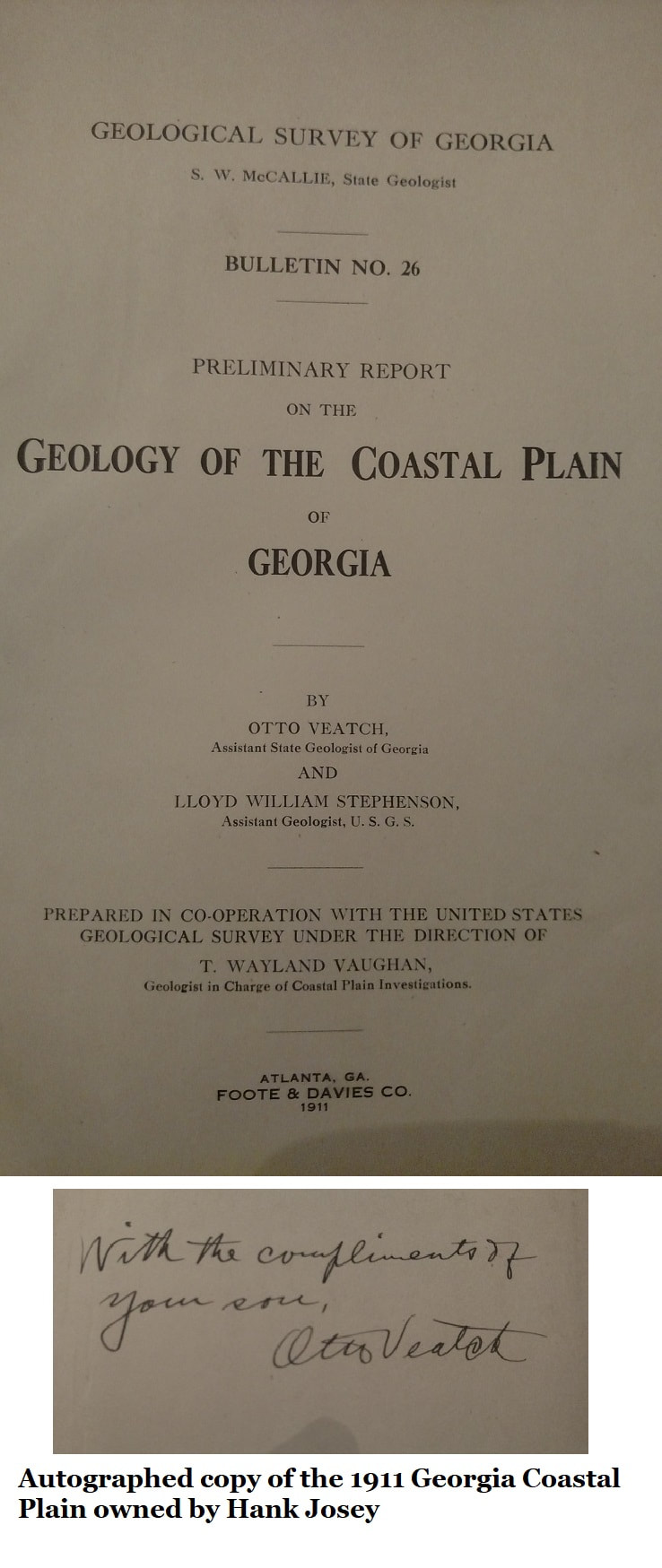22: Geology of the Coastal Plain
1911
Veatch & Stephenson
In 1911 the Georgia Geological Survey published a paper entitled “Geology of the Coastal Plain of Georgia” by Otto Veatch and Dr. Lloyd William Stephenson. This was a detailed review of all Georgia sediments south of the Fall Line, a huge project even by today’s standards.
The report is wide ranging, faithfully covering the sciences of geology, paleontology and stratigraphy with an eye towards economic geology; this means mineral resources for industry, mining, construction, and infrastructure development.
It's hard to imagine a better, long term scientific investment which Georgia has ever made. This investment saw us through two world wars, generated uncounted jobs and benefited the whole state. Towns, industries, even ways of life have come and gone since these papers were published. As a direct result fortunes have been made (and in some cases lost again) in mining, railroads, manufacturing, construction and road building.
The project was actually two fold, with two papers created as an agreement between Georgia and the federal government. The United States Geological Survey published the research as Underground Water Resources of the Coastal Plain of Georgia. The Georgia Geological Survey published the Geology of the Coastal Plain, which we’re reviewing.
When you read their findings it’s amazing how many of our modern roads and rail lines were already in place. The railroads haven’t changed a great deal and many of their observations from railroad cuts through hillsides are still applicable. The roads have changed. In their day, most would have been single lane dirt or clay roads built for wagons and horses. Today most of these roads have been widened dramatically and in many cases new highways cut across natural features which old roads wound through.
The names of many of the formations identified have also changed, and in many cases Veatch and Stephenson’s age assessments have been revised. Many of the animal genus and specie names have also been revised in the last century as modern research grows ever more precise.
In spite of all of this their actual observations were very accurate, highly descriptive, and written in a style easily accessed by the public. You can take their field descriptions on site today understand exactly what they saw. No mean feat considering the gap in technology and language.
In the last century our understanding over the history of sea level change, global temperature change, evolution, vertebrate, and invertebrate paleontology has greatly expanded beyond what Veatch and Stephenson could have dreamed of. Since so much has been reassessed I’ll only share the general terms for what Veatch and Stephenson reported over vertebrate finds.
I’ll treat their reports of plants a bit differently, faithfully adhering to their text as most of the scientific names to the level of genus are still in use. There hasn’t been a great deal of modern research on Georgia’s plant fossils.
Wherever possible I’ve used online tools to confirm these locations still exist. However, many of these historic sites have been over collected in the last century and specimens have become rare.
I’d like thank Ms. Tina Perkins at Central High School in Macon, Georgia for leading me to the on-line edition of this 1911 research. The print version has become rare.
Reference
Georgia 1911
Geology of the Coastal Plain of Georgia, Bulletin 26, Georgia Geologic Survey. Otto Veatch and Lloyd William Stephenson, Bulletin 26,Geological Survey of Georgia.1911
